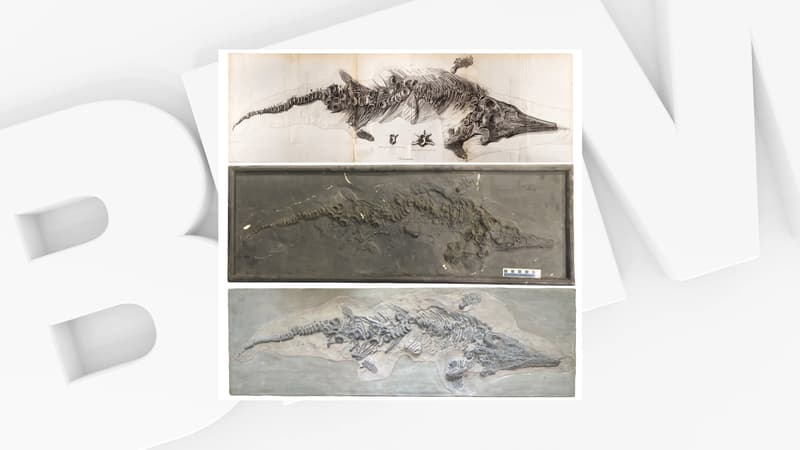Researchers have found two ancient casts of the first nearly complete skeleton of an ichthyosaur, a prehistoric reptile discovered in the UK in the 19th century but destroyed in a bombing raid during World War II, according to a study published Wednesday.
The ichthyosaur is a marine reptile similar to a dolphin with an elongated snout with teeth, which appeared about 250 million years ago during the Mesozoic period, and whose largest specimens could measure more than 20 meters. Most became extinct 200 million years ago, although some smaller representatives survived until 90 million years ago.
A fossil discovered in 1818
Complete or nearly complete ichthyosaur fossils are rare. The one at the center of the study published Wednesday by the Royal Society of London would be the first to have been formally identified as such in the early 19th century by a physician, Everard Home.
It is said to have been discovered in 1818 in the Lyme Regis region, on the south coast of England, by Mary Anning, a self-taught paleontologist, recognized today as a major figure in paleontology. Almost complete and preserved by the Royal College of Surgery in London, this fossil had been destroyed in a bombing raid during World War II.
Plasters discovered in Berlin and the United States
But two researchers, Dean Lomax of the University of Manchester and Judy Massare of New York University, discovered two casts of this ichthyosaur, one in 2016 at Yale University’s Peabody Museum of Natural History, and the other in 2019 at Yale University. the Natural History Museum in Berlin.
“There was no written record to suggest that casts had been made of this specimen, which was unusual given the importance of this fossil and the number of casts made for other ichthyosaur and plesiosaur specimens discovered in the early 19th century,” the researchers write. two researchers.
The creation of such molds was very common in the 19th century to allow the spread of knowledge about fossil discoveries and also to cater to expanding museums around the world.
The fact that the two ichthyosaur casts have “remained unidentified in their respective collections highlights the importance of experts studying these collections,” but also “the potential importance of ancient casts in museum collections,” they write. the researchers.
Source: BFM TV


